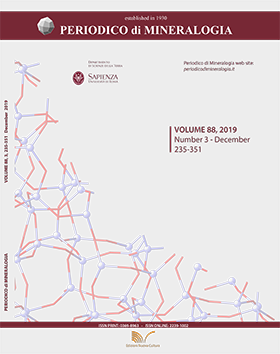Potentially toxic elements distribution in the serpentinized and deformed ultramafic rocks from the Voltri Massif (NW, Italy)
DOI:
https://doi.org/10.2451/2019PM874Keywords:
geogenic source, serpentinization, natural geochemical background, potential toxic elements, Voltri Massif, LiguriaAbstract
The aim of the work is to assess the role of local-scale lithological, textural, and structural factors in the distribution of potentially toxic elements (PTEs) in different ultramafic rocks from the high-pressure ophiolitic Voltri Massif (Central Liguria, NW Italy). The results evidenced that Cr (up to 4183 ppm), Ni (up to 3900 ppm), and Co (up to 334 ppm) are invariably the PTEs with the highest concentrations; in addition, V, Cu, and Zn are systematically found in non-negligible amounts. Spinel-group minerals (chromium spinel, ferrian chromite, chromium magnetite, and magnetite) are by far the main potential source of the PTEs. Nevertheless, several PTEs are also present within serpentines, olivines, pyroxenes, chlorites, as well as within accessory phases (e.g., ilmenite and Ni-sulphides) and within authigenic minerals formed in the early stages of rock weathering (cryptocrystalline to amorphous Fe-oxides and -oxyhydroxides).
The result obtained allowed to evidence that the main factors controlling the PTEs distribution within the rocks resulted to be the serpentinization degree and the deformation style and intensity which, in turn, strictly control the mineral assemblages and the mineral chemistry.


